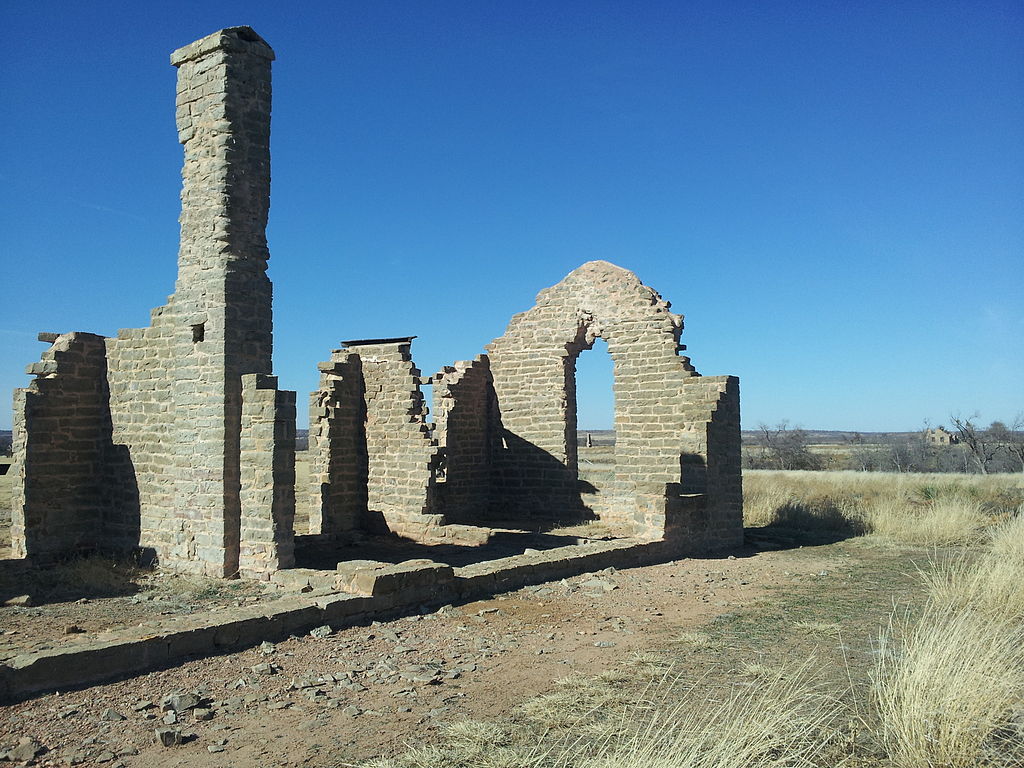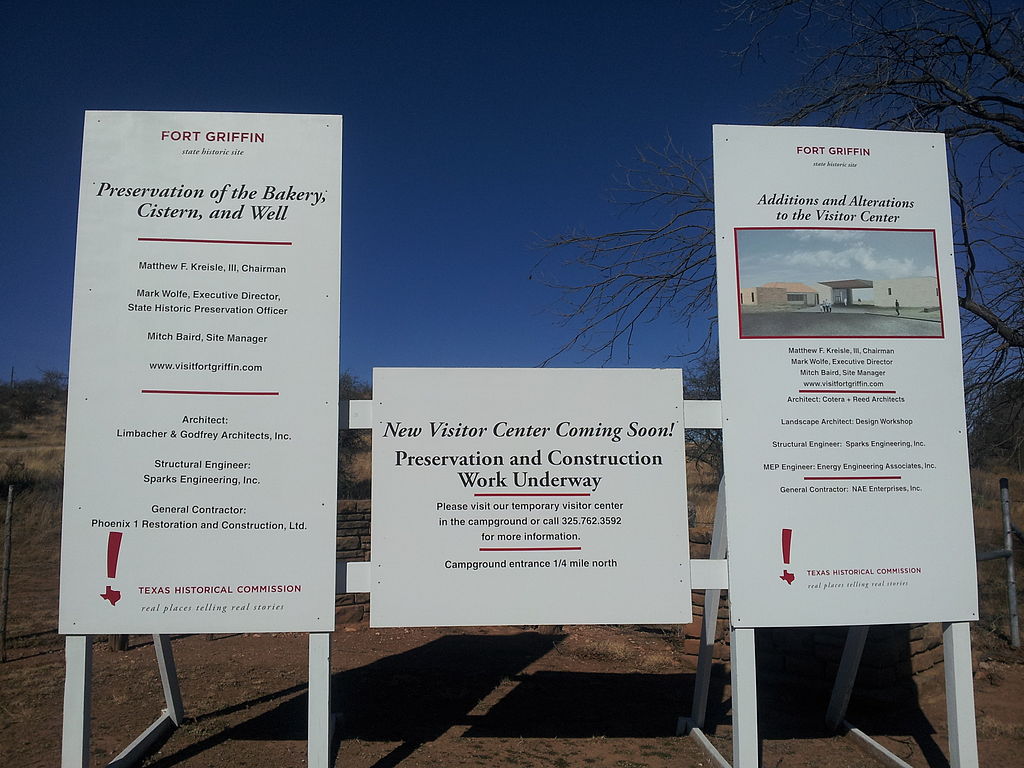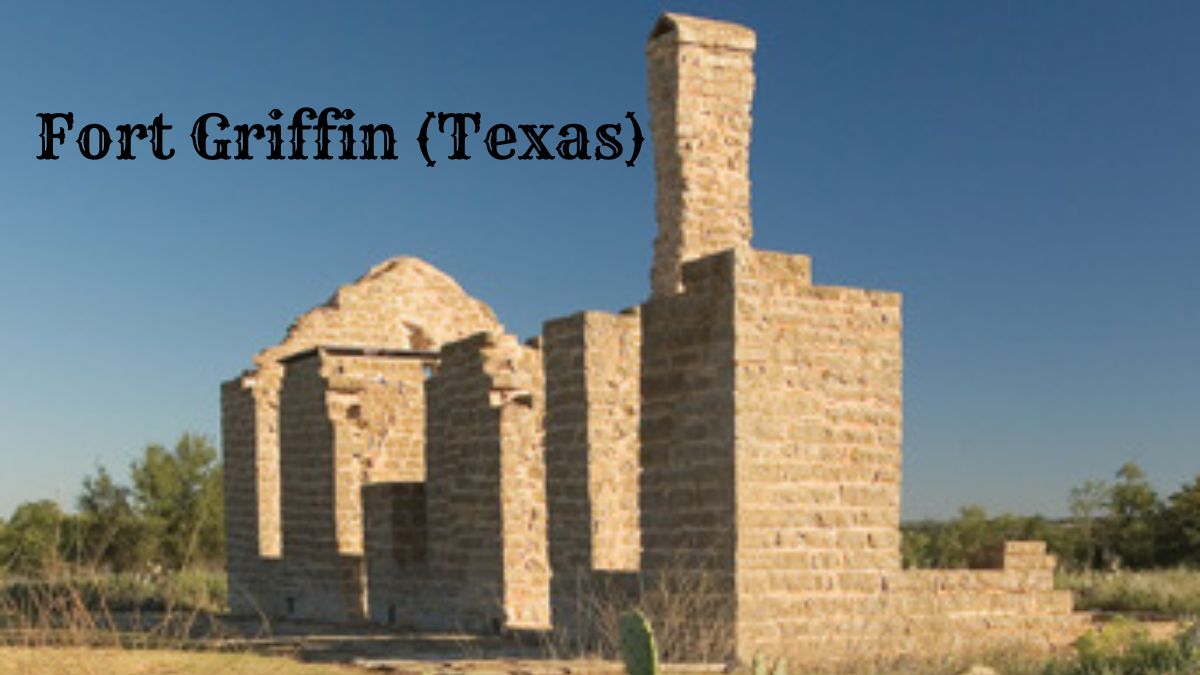Step back to the rugged frontier days with a visit to Fort Griffin, Texas.
Established in 1867, this military outpost protected settlers from Comanche and Kiowa raids during the post-Civil War reconstruction era.
Named after the Texas Historical Commission preserves U.S. Army General Charles Griffin, the fort’s legacy.
Fort Griffin offers a unique glimpse into the challenges and triumphs of frontier life. It is part of a chain of forts, including Belknap and Phantom Hill.
Explore its fascinating history and immerse yourself in the vibrant cultural heritage that continues to be celebrated today.
Background History of Fort Griffin (Texas)

Fort Griffin, located in Texas, played a pivotal role in the state’s frontier history.
Established in 1867, the fort served as a military outpost. It protected against Comanche and Kiowa raids. It was initially called Camp Wilson after Charles Griffin, a U.S. Army General.
The Texas Historical Commission now manages the Fort Griffin State Historic Site. This site preserves the military history and frontier life of Texas.
Fort Griffin was part of a chain of forts that included Belknap, Inge, and Phantom Hill. These forts were crucial during the post-Civil War reconstruction period.
The site is listed on the National Register of Historic Places. This designation highlights its importance in Texas and U.S. history.
Various historical figures, like John Wesley Hardin, are associated with Fort Griffin, which is known for its connections to the Old West and Texas Ranger law enforcement.
The 6th Cavalry (Sixth Cavalry) was stationed here. They were involved in major conflicts like the Red River War.
Today, Fort Griffin Fandangle, a local festival, celebrates the site’s rich history and helps to preserve and promote Texas history.
Fort Griffin’s significance also relates to the Texas State Historical Association, whose work ensures the fort’s story is accurately told and remembered.
A Natural Haven by the Brazos River

Fort Griffin, located near the Clear Fork of the Brazos River, has a rich geographical setting characterized by diverse flora and fauna. Its climate and terrain significantly influence the area’s natural features.
Brazos River and Tributaries
The Brazos River, Texas’ longest river, profoundly impacts Fort Griffin’s geography. A significant tributary, the Clear Fork, flows nearby, contributing to the area’s fertile landscape.
These waterways support a variety of wildlife and vegetation.
Albany, a town near Fort Griffin, benefits from this water system. The river and its tributaries provide essential resources for wildlife and human activities, supporting local agriculture and recreation.
Flora and Fauna
The environment boasts a variety of plant species adapted to the region’s climate. Native grasses and wildflowers thrive in the area, providing habitats for numerous species of birds and mammals.
Trees such as oaks and pecans dot the landscape, offering shade and food sources for wildlife.
Deer, coyotes, and various bird species inhabit the area. The diverse plant and animal life reflects the region’s ecological richness, which is supported by the river systems and their tributaries.
Climate and Terrain
Fort Griffin’s climate is characterized by hot summers and mild winters, a typical feature of central Texas. Rainfall varies, but the river systems help maintain moisture levels conducive to agriculture and wildlife.
The terrain includes rolling hills and plateaus, offering picturesque views and opportunities for outdoor activities. River erosion creates varied landforms, enriching the region’s natural beauty and ecological complexity.
Visitor Experience

Visitors to Fort Griffin can explore a variety of attractions and activities. These include outdoor adventures, historical experiences, and educational opportunities for all ages.
State Park Attractions
Fort Griffin State Historic Site offers several attractions. The visitor center features interpretive exhibits on the fort’s history and the surrounding area’s heritage.
Families, seniors, veterans, teachers, and first responders can enjoy our living history demonstrations, where reenactors bring the past to life.
There are well-maintained campsites for overnight camping, providing a full experience of the site’s natural beauty.
Hiking trails wind through the park, showcasing scenic landscapes and native wildlife.
Fishing enthusiasts will find several spots along the river, perfect for a relaxing day.
Outdoor Activities
Outdoor activities are a highlight at Fort Griffin.
Hiking trails extend through diverse terrains, accommodating all skill levels.
Fishing is available at specified locations along the river, where anglers can expect to find various fish species.
Camping is another popular activity. The park contains several campsites equipped with essential amenities for a comfortable stay.
Stargazing is particularly captivating here due to minimal light pollution, offering clear night sky views.
Educational Programs
The park’s educational programs are designed to engage visitors.
The visitor center hosts a series of interpretive exhibits that detail the fort’s history.
These exhibits are complemented by living history demonstrations and guided tours, which provide immersive learning experiences.
Special programs cater to families, veterans, seniors, and first responders.
Learn about the historical significance of Fort Griffin through storytelling and interactive displays.
Educational visits often include workshops for school groups, making it a valuable resource for teachers seeking field trip destinations.
Legends, Battles, & Legacy of the American West
Fort Griffin, Texas, carries a legacy interwoven with notable figures, historical events, and its significance in the history of the American West.
Notable Figures
Fort Griffin was frequented by legendary figures such as Wyatt Earp and Pat Garrett.
Earp, known for his lawman career, passed through Fort Griffin during his journey from Kansas to Dodge City.
Garrett, famed for catching Billy the Kid, also had connections to the Fort.
Another infamous character, John Selman, lived in the area. He was a gunfighter and lawman who encountered numerous outlaws.
Lottie Deno, a well-known gambler and prominent female figure in the Old West, lived near the Fort and ran a successful gambling house.
She held an important place among merchants and settlers, contributing to the local economy.
Historical Events
Fort Griffin was a hub for buffalo hunters and ranchers during its heyday and played a key role in the westward expansion.
Established in 1867, the Fort provided crucial protection for settlers and traders.
Significant skirmishes with Native American tribes occurred near the Fort, notably influencing the settlement patterns in Shackelford County. The area was part of the broader conflict between Native people and settlers.
The remains of the Fort ruins stand today as a testament to this historical period, offering insights into the life and struggles of the time.
These ruins attract historians and tourists, preserving the town’s legacy and pivotal role in American history.
Biodiversity Conservation
Biodiversity conservation at Fort Griffin, Texas, is essential to maintaining the region’s ecological balance.
The Texas Parks and Wildlife Department is crucial in overseeing conservation efforts, including habitat restoration, species protection, and various research programs.
The Texas Longhorn Herd is of historical and ecological importance. The Official State of Texas Longhorn Herd at Fort Griffin is managed carefully to ensure genetic diversity and sustainability.
Efforts also include protecting native plant species. Grasslands and native flora are vital for supporting local wildlife.
Conservation programs focus on controlling invasive species and promoting indigenous plant growth.
Fort Griffin serves as a habitat for numerous bird species. The area attracts bird watchers and researchers alike.
Conservation efforts help maintain bird populations and encourage bird migration patterns.
Conservation activities at Fort Griffin aim to preserve water quality by protecting the local rivers and water sources. This is essential for both wildlife and human communities.
Wildlife monitoring is a key strategy.
Regular surveys and data collection provide insight into population trends and health. This helps in making informed management decisions.
Public education is vital for conservation success.
Programs and events raise awareness about the importance of biodiversity.
Visitors are encouraged to engage in responsible recreation.
Preservation Efforts at Fort Griffin
Various efforts have been made to preserve Fort Griffin, TX. These efforts focus on restoring and maintaining the historical site and ongoing archaeological research to uncover and understand its past.
Restoration and Maintenance
Fort Griffin State Historic Site has been the focus of numerous restoration and maintenance projects.
The Texas Historical Commission manages the site and works to preserve its structural integrity and historical accuracy.
Various non-profits have contributed to funding these restoration efforts, allowing for the refurbishment of buildings and stabilization of ruins.
Volunteer groups often aid in maintenance work, including landscaping and minor repairs.
The Handbook of Texas Online provides detailed information about these efforts and highlights the site’s status as a State Archaeological Landmark.
Regular assessments help ensure that the site remains safe for visitors and that its historical significance is maintained.
Archeological Research
Archeologists have extensively researched Fort Griffin to uncover artifacts and understand the site’s historical context.
These efforts are crucial for piecing together the daily lives of those who inhabited the fort. Findings include military artifacts, personal items, and building remnants.
Researchers work under guidelines to protect the site, balancing excavation with preservation.
The gathered data is shared with the public through exhibits and publications, significantly contributing to educational outreach.
This ongoing research enriches knowledge about Fort Griffin and ensures that its history is accurately represented for future generations.
Explore More: Army Forts in Texas
Amenities and Services
Fort Griffin State Historical Park offers a variety of amenities and services that cater to recreational activities and necessary visitor facilities.
These include leisure spots, historical sites, and practical facilities to ensure a comfortable experience for visitors.
Recreation and Leisure
Visitors can enjoy multiple options for relaxation and fun.
The playground provides a safe space for children to play, while picnic areas allow families to enjoy meals together outdoors.
Nature enthusiasts can explore the surrounding landscapes, providing a serene backdrop for activities.
Historical structures like the powder magazine and barracks offer glimpses into the past. These locations often host interactive displays, making history come alive.
Special events and seasonal activities are frequently scheduled, providing yearly entertainment.
Facilities for Visitors
Fort Griffin ensures visitors have access to essential facilities.
The mess hall is a central meal spot, offering historical significance and functional use.
The bakery offers baked goods, providing a convenient stop for snacks.
Public restrooms are easily accessible throughout the site, ensuring comfort during extended visits.
A hand-dug well serves as a historical exhibit and a functional water source.
Additionally, ample parking spaces accommodate vehicles, making visiting easier for families and groups.
Explore More: 10 Historic Forts in Texas: Exploring a Rich Military Heritage
Local Legacy
Fort Griffin retains a rich historical legacy that influences the present-day community. This legacy is celebrated through vibrant events, influential impacts on nearby areas, and detailed historical documentation.
Annual Events and Traditions
Fort Griffin Fandangle, held annually, is Texas’ oldest outdoor musical.
This event attracts large crowds and portrays Western life through drama, music, and dance. The reenactments of cattle drives and historical figures like Doc Holliday offer an immersive experience into the late 1800s.
Events include:
- Parades
- Live music performances
- Rodeo activities
These traditions foster a strong community and pride among residents and visitors alike.
Impact on Surrounding Communities
Fort Griffin’s influence extends beyond its borders.
Its historical significance has dramatically impacted communities along U.S. Highway 283, particularly Abilene. Preserving historical sites contributes to local tourism, boosting the economy.
The legacy of cattle drives and Western heritage continues to be a source of cultural and educational value for surrounding areas.
Schools and local organizations frequently visit Fort Griffin for educational trips, making history accessible and engaging.
Literature and Documentation
Extensive documentation of Fort Griffin’s history can be found in publications such as “The Handbook of Texas Online” and various local archives.
Comprehensive resources like these ensure that the rich history of Fort Griffin is well-preserved and accessible.
- Bibliographies
- Academic articles
- Historical records
These materials provide scholars and enthusiasts with valuable insights.
Proper citation practices, including the Chicago Manual of Style, are crucial for maintaining the integrity and accuracy of historical research.
This thorough documentation underscores the cultural importance of Fort Griffin within the broader scope of Texas history.

Cory is a website owner and content creator who enjoys fishing, history, coin collecting, and sports, among other hobbies. He is a husband and father of four.
Romans 15:4 For whatever was written in former days was written for our instruction, that through endurance and through the encouragement of the Scriptures we might have hope.

